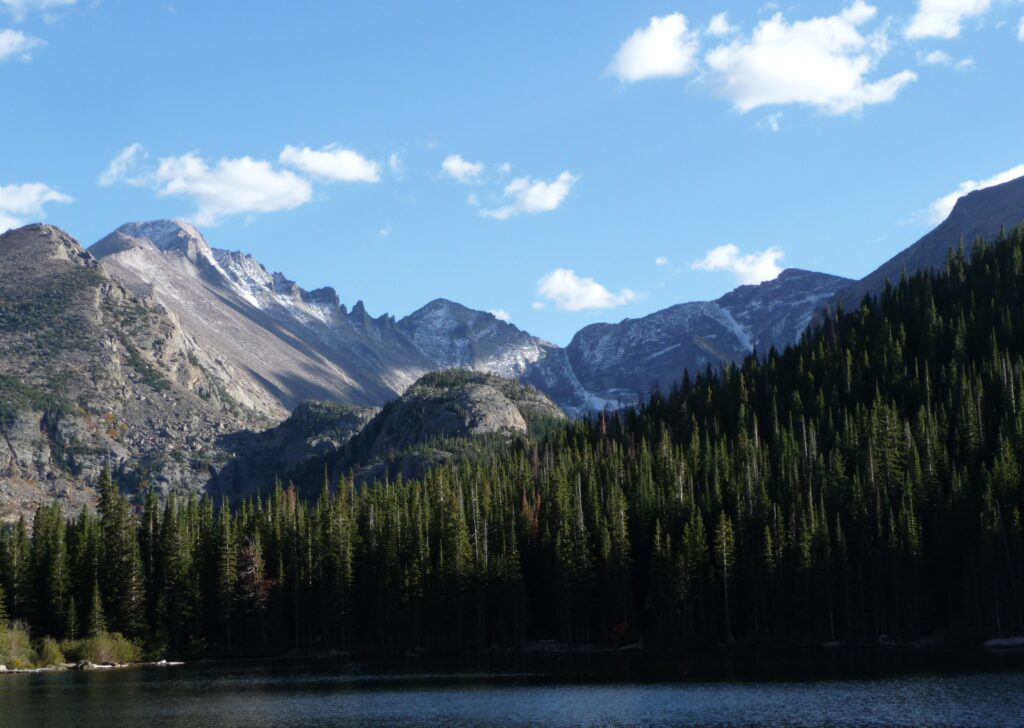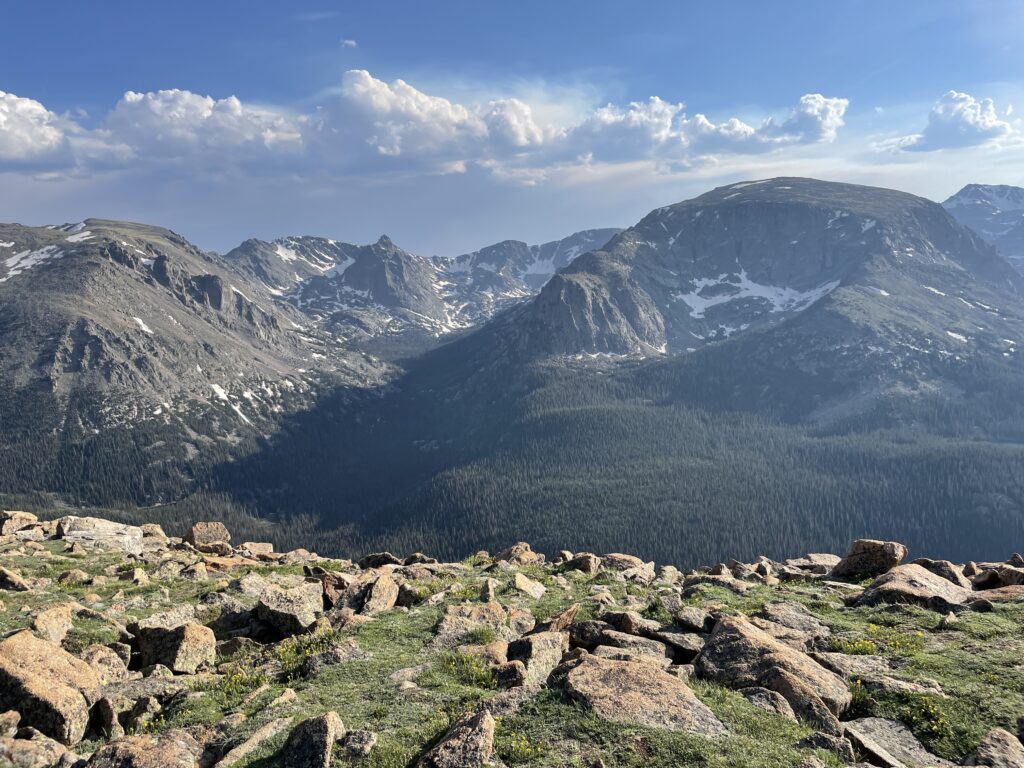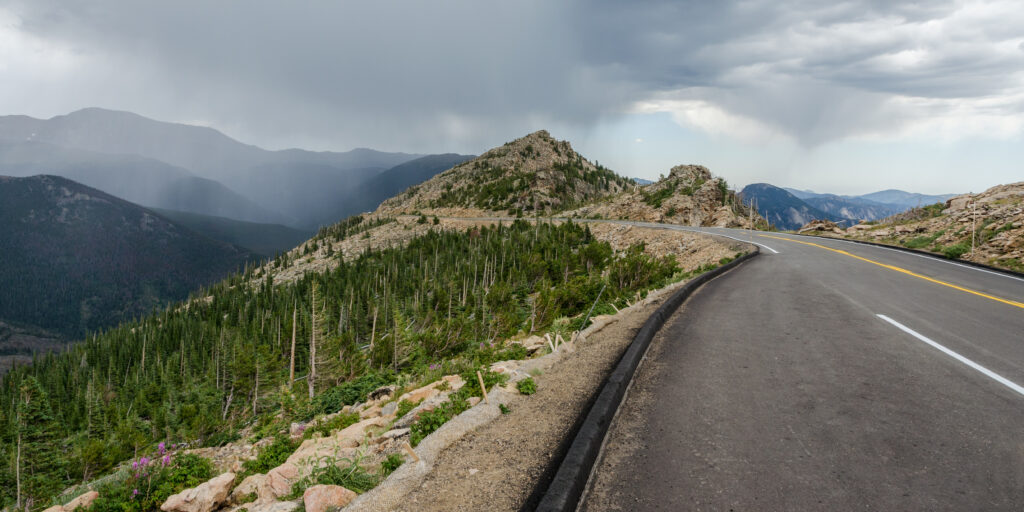There are places on Earth that command reverence, landscapes so grand they quiet the mind and stir the soul. Rocky Mountain National Park (RMNP) is one of those places. Sprawled across 415 square miles of north-central Colorado, this is a realm where jagged peaks tear at the sky, alpine lakes shimmer like sapphires, and wildlife roams free in vast, scenic valleys.
Established in 1915, RMNP is a national treasure that offers both accessible adventure and profound wilderness. Whether you’re driving a world-famous scenic byway, hiking to a thundering waterfall, or listening to the haunting bugle of an elk in autumn, the park imprints itself on your memory. This guide will walk you through the must-see sights and essential experiences of this high-altitude paradise.

Drive the Highway to the Sky: The Legendary Trail Ridge Road
No visit to Rocky Mountain National Park is complete without a journey on Trail Ridge Road. More than just a way to get from one side of the park to the other, this is the highest continuous paved road in North America, cresting at an incredible 12,183 feet (3,713 meters). The drive itself is an adventure, taking you from the lush, forested montane valleys up through the subalpine zone and into a world that feels like the top of the continent: the alpine tundra.
As you ascend above the treeline, the world transforms. Gnarled, ancient krummholz trees give way to a vast expanse of delicate wildflowers and hardy grasses. Pull over at one of the many overlooks, like Rainbow Curve or Forest Canyon Overlook, to soak in panoramic views that stretch for hundreds of miles. At the road’s summit, the Alpine Visitor Center provides a fascinating look at this fragile ecosystem. Driving Trail Ridge Road isn’t just a scenic drive; it’s an unforgettable journey into the sky.

A Hiker’s Paradise: Trails for Every Skill Level
With over 350 miles of trails, RMNP is a world-class hiking destination. The park offers an incredible variety of terrain, ensuring that everyone from casual walkers to seasoned mountaineers can find their perfect path.
- For the Family: The Bear Lake Loop is an iconic, flat, and accessible 0.6-mile trail that circles a stunning subalpine lake, offering picture-perfect reflections of Hallett Peak. For a bit more adventure, continue from Bear Lake on the Emerald Lake Trail, a 3.6-mile roundtrip hike that passes two other beautiful lakes, Nymph and Dream, along the way.
- For the Waterfall Chaser: A gentle 1.8-mile roundtrip hike to Alberta Falls is a park classic, rewarding you with views of a powerful waterfall cascading through a granite gorge.
- For the Challenge Seeker: For experienced and well-prepared hikers, the ultimate prize is summiting Longs Peak. At 14,259 feet (4,346 meters), this strenuous, technical climb is one of Colorado’s most famous “fourteeners” and requires an early start and respect for the mountain’s unpredictable weather.

The Wild Heart of the Rockies: Unforgettable Wildlife Viewing
Rocky Mountain National Park is a sanctuary for some of North America’s most iconic animals. The key to spotting them is knowing where and when to look, and always remembering to keep a safe and respectful distance.
The undisputed king of the park is the elk. Large herds can often be seen grazing in the meadows of Moraine Park and Horseshoe Park, especially at dawn and dusk. In the fall, these areas come alive with the famous elk rut, where bull elks compete for females with their powerful and echoing bugles.
Keep your eyes on the high-altitude cliffs and rocky slopes for bighorn sheep, the park’s official symbol. Sheep Lakes is a designated viewing area where they often come down for minerals. You might also spot moose wading in the wetlands on the west side of the park, while smaller critters like yellow-bellied marmots and squeaking pikas dart among the rocks in the alpine tundra.

More Than Mountains: Lakes, Waterfalls, and Meadows
While the towering peaks define the skyline, the park’s soul can be found in its quieter details. RMNP is dotted with over 150 pristine lakes, each offering a unique sense of tranquility. Sprague Lake is famous for its serene morning reflections and easy, accessible loop trail. The water features don’t stop there; from the delicate beauty of Bridal Veil Falls to the dramatic Chasm Falls, the sound of rushing water is a constant companion on many park trails.
In the summer months, the park’s meadows burst into a riot of color. From the deep blues of columbines to the bright reds of Indian paintbrush, the wildflower displays in areas like Paradise Park and Cub Lake are a photographer’s and nature-lover’s dream.
A Park for All Seasons
Rocky Mountain National Park offers a different kind of magic in every season.
- Summer (June-August): The most popular season, with full access to Trail Ridge Road, vibrant wildflowers, and perfect hiking weather (be prepared for afternoon thunderstorms!).
- Autumn (September-October): A spectacular time to visit. The aspen trees turn brilliant gold, the air is crisp, and the elk rut is in full swing.
- Winter (November-March): The park transforms into a quiet, snow-covered wonderland. Lower elevation trails are perfect for snowshoeing and cross-country skiing, offering solitude and stunning winter scenery.
- Spring (April-May): A season of transition. Snow begins to melt, waterfalls roar back to life, and baby animals make their first appearance. Be aware that weather is highly unpredictable and many higher-elevation trails remain snow-covered.

Planning Your High-Altitude Adventure: Know Before You Go
A successful trip to RMNP requires a bit of planning. Here are some essential tips:
- Location: The park has two main gateway towns: Estes Park on the east side and Grand Lake on the west.
- Timed Entry Permit System: During the peak season (typically late May to mid-October), RMNP uses a reservation system to manage crowds. You must book a timed entry permit online in advance to enter the park. Check the official park website for the latest details.
- Altitude Sickness: Much of the park is above 8,000 feet (2,438 meters). Give your body time to acclimate. Drink plenty of water (more than you think you need), avoid strenuous activity on your first day, and be aware of symptoms like headaches and dizziness.
- Prepare for Changing Weather: Mountain weather is notoriously fickle. A sunny morning can turn into a stormy afternoon in minutes. Always dress in layers, and pack a waterproof jacket, hat, and gloves, even in summer.
Rocky Mountain National Park is more than a destination; it’s an invitation to explore, to be humbled by nature’s scale, and to find adventure at every turn. It’s a place that challenges your body and restores your spirit, leaving you with a profound sense of wonder long after you’ve returned to sea level.
